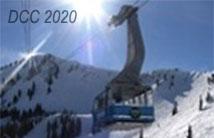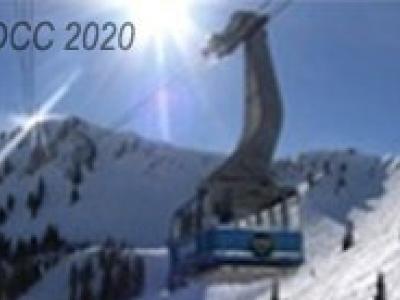
The Data Compression Conference (DCC) is an international forum for current work on data compression and related applications. Both theoretical and experimental work are of interest. Visit website.

- Read more about Light Field Image Compression Using Multi-Branch Spatial Transformer Networks Based View Synthesis
- Log in to post comments
The recent years have witnessed the widespread of light field imaging in interactive and immersive visual applications. To record the directional information of the light rays, larger storage space is required by light field images compared with conventional 2D images. Hence, the efficient compression of light field image is highly desired for further applications. In this paper, we propose a novel light field image compression scheme using multi- branch spatial transformer networks based view synthesis.
- Categories:
 113 Views
113 Views
- Read more about Statistical Modeling based Fast Rate Distortion Estimation Algorithm for HEVC
- 1 comment
- Log in to post comments
Rate distortion optimization (RDO) is the basis for algorithm optimization in video coding, such as mode decision, rate control and etc. Minimizing the rate distortion coding cost is usually employed to determine the optimal coding parameters such as quantization level, coding mode, and etc. However, rate and distortion calculations for optimal solution decision from massive possible candidates suffer from dramatically high computation complexity.
DCC Poster.pdf
- Categories:
 45 Views
45 Views
- Read more about Reverse Multi-Delimiter Compression Codes
- Log in to post comments
An enhanced version of a recently introduced family of variable length binary codes with multiple pattern delimiters is presented and discussed. These codes are complete, universal, synchronizable, they have monotonic indexing and allow a standard search in compressed files. Comparing the compression rate on natural language texts demonstrates that introduced codes appear to be much superior to other known codes with similar properties. A fast byte-aligned decoding algorithm is constructed, which operates much faster than the one for Fibonacci codes.
- Categories:
 54 Views
54 Views
- Read more about On dynamic succinct graph representations
- 2 comments
- Log in to post comments
- Categories:
 261 Views
261 Views
- Read more about Temporal Redundancy Reduction in Compressive Video Sensing by using Moving Detection and Inter-Coding
- Log in to post comments
Compressive sensing is a simultaneously signal acquisition and compression technique for efficiently acquiring and reconstructing a signal from a small number of measurements, which can be obtained by linear projections onto sparse signal. In order to further compress the measurements, many works applied intra prediction-based measurement coding. In this paper, we proposed temporal redundancy reduction in compressive video sensing by using moving detection and inter-coding.
DCCPOSTER.pdf
- Categories:
 64 Views
64 Views
- Read more about Denoising Deep Boltzmann Machines: Compression for Deep Learning
- Log in to post comments
- Categories:
 43 Views
43 Views
- Read more about DRASIC: Distributed Recurrent Autoencoder for Scalable Image Compression
- Log in to post comments
We propose a new architecture for distributed image compression from a group of distributed data sources. The work is motivated by practical needs of data-driven codec design, low power consumption, robustness, and data privacy. The proposed architecture, which we refer to as Distributed Recurrent Autoencoder for Scalable Image Compression (DRASIC), is able to train distributed encoders and one joint decoder on correlated data sources. Its compression capability is much better than the method of training codecs separately.
- Categories:
 36 Views
36 Views
- Read more about Spectral Video Compression Using Convolutional Sparse Coding
- Log in to post comments
- Categories:
 26 Views
26 Views
- Read more about Pattern search in grammar-compressed graphs
- 1 comment
- Log in to post comments
- Categories:
 47 Views
47 Views
- Read more about Re-Pair in Small Space
- Log in to post comments
Re-Pair is a grammar compression scheme with favorably good compression rates. The computation of Re-Pair comes with the cost of maintaining large frequency tables, which makes it hard to compute Re-Pair on large scale data sets. As a solution for this problem we present, given a text of length n whose characters are drawn from an integer alphabet, an O(n^2) time algorithm computing Re-Pair in n lg max(n, τ) bits of working space including the text space, where τ is the number of terminals and non-terminals.
repair.pdf
- Categories:
 87 Views
87 Views